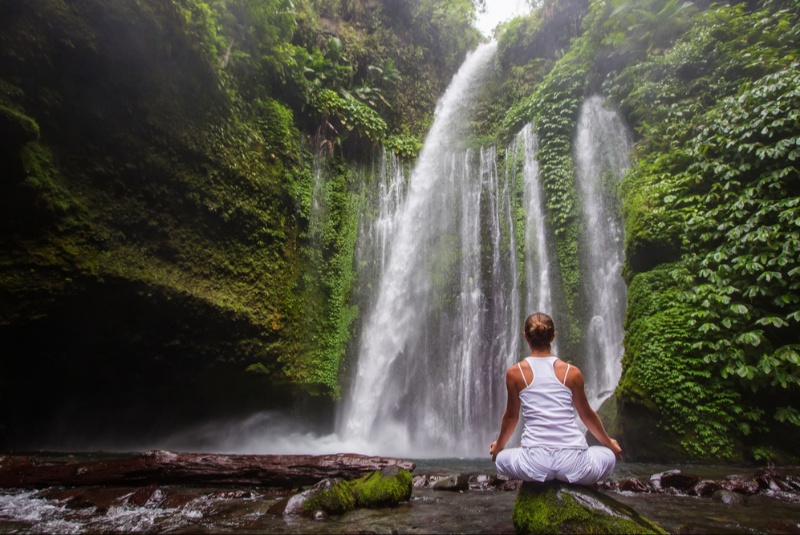Summer offers a perfect opportunity to take your meditation practice outdoors and connect with nature. The warm weather, fresh air, and natural surroundings can enhance your meditation experience, providing a sense of peace and rejuvenation. This comprehensive guide explores various outdoor meditation practices that you can incorporate into your routine, helping you achieve tranquility and mindfulness during the summer months.
Understanding the Benefits of Outdoor Meditation
Outdoor meditation combines the calming effects of nature with the benefits of meditation, creating a powerful practice for mental and physical well-being. Natural settings can reduce stress, lower blood pressure, and improve mood. The sounds of birds, rustling leaves, and flowing water can enhance your sensory awareness and deepen your meditation. Understanding the benefits of outdoor meditation ensures you make the most of your practice, promoting overall health and serenity.
Choosing the Right Location
Selecting a peaceful and comfortable location is crucial for a successful outdoor meditation session. Look for places that offer natural beauty and tranquility, such as parks, gardens, beaches, or forests. Ensure the spot is safe and free from excessive noise or disturbances. Early mornings or late evenings are ideal times to meditate outdoors, as these periods often provide a calm and quiet environment. Choosing the right location ensures you create a conducive atmosphere for deep meditation and relaxation.
Preparing for Outdoor Meditation
Proper preparation can enhance your outdoor meditation experience. Dress in comfortable, weather-appropriate clothing and bring any necessary items, such as a meditation cushion, mat, or blanket. Use sunscreen and insect repellent to protect yourself from the elements. Bring a bottle of water to stay hydrated. Setting up a small altar with natural elements like stones, flowers, or leaves can create a sacred space. Preparing for outdoor meditation ensures you remain comfortable and focused during your practice.
Practicing Mindful Walking
Mindful walking is a form of meditation that involves walking slowly and paying attention to each step and breath. This practice helps you connect with the present moment and your surroundings. Find a quiet path or trail and walk at a slow, steady pace. Focus on the sensations in your feet as they touch the ground, the movement of your body, and your breath. Practicing mindful walking ensures you cultivate awareness and mindfulness, transforming a simple walk into a meditative experience.
Engaging in Grounding Exercises
Grounding exercises help you connect with the earth and stabilize your energy. Find a grassy area or sandy beach and stand or sit with your bare feet touching the ground. Close your eyes and take deep breaths, imagining roots extending from your feet into the earth. Feel the support and stability of the ground beneath you. Grounding exercises can reduce stress, improve focus, and enhance your connection to nature. Engaging in these practices ensures you anchor yourself physically and mentally, promoting a sense of balance and calm.
Meditating with Nature Sounds
Nature sounds can enhance your meditation by creating a soothing auditory backdrop. Find a spot near a stream, waterfall, or in a forest where you can hear natural sounds. Close your eyes and focus on the sounds around you, such as birds chirping, leaves rustling, or water flowing. Allow these sounds to anchor your attention and deepen your relaxation. If you live in an urban area, consider using recordings of nature sounds. Meditating with nature sounds ensures you immerse yourself in the environment, enhancing your meditation experience.

Practicing Sun Salutations
Sun Salutations, or Surya Namaskar, is a sequence of yoga poses performed in a flowing, mindful manner. Practicing Sun Salutations outdoors allows you to greet the sun and energize your body and mind. Find a sunny spot and perform the sequence slowly, coordinating each movement with your breath. Focus on the sensations in your body and the warmth of the sun on your skin. Practicing Sun Salutations ensures you incorporate physical activity into your meditation practice, promoting overall well-being and vitality.
Meditating with Natural Objects
Using natural objects as focal points can enhance your outdoor meditation. Choose an object such as a flower, leaf, stone, or shell. Sit comfortably and hold or place the object in front of you. Observe its colors, textures, and shapes without judgment. Focus your attention on the object, allowing your mind to become still and centered. Meditating with natural objects ensures you engage your senses and deepen your connection to the natural world.
Practicing Loving-Kindness Meditation
Loving-kindness meditation, or Metta, involves generating feelings of compassion and love towards yourself and others. Find a peaceful outdoor setting and sit comfortably. Close your eyes and take a few deep breaths. Begin by silently repeating phrases of loving-kindness to yourself, such as “May I be happy, may I be healthy, may I be peaceful.” Gradually extend these wishes to loved ones, acquaintances, and all beings. Practicing loving-kindness meditation ensures you cultivate positive emotions and a sense of interconnectedness with all life.
Incorporating Breathwork Exercises
Breathwork exercises can enhance your outdoor meditation practice by promoting relaxation and mental clarity. Find a comfortable spot and sit or lie down. Practice deep diaphragmatic breathing, focusing on the rise and fall of your abdomen with each breath. Experiment with different techniques, such as alternate nostril breathing or 4-7-8 breathing, to find what works best for you. Incorporating breathwork exercises ensures you calm your nervous system and enhance your meditation experience.
Journaling After Meditation
Journaling after meditation can help you reflect on your experiences and insights. Bring a journal and pen to your outdoor meditation session. After meditating, take a few moments to write down your thoughts, feelings, and observations. Reflect on how the practice affected your mind and body, and any insights you gained. Journaling ensures you deepen your self-awareness and track your progress over time, enhancing the benefits of your meditation practice.
Creating a Consistent Practice
Consistency is key to reaping the full benefits of outdoor meditation. Set a regular schedule for your practice, whether daily or several times a week. Make outdoor meditation a priority, just like any other important activity. Over time, you’ll find that consistent practice enhances your ability to focus, reduces stress, and improves overall well-being. Creating a consistent practice ensures you establish a sustainable routine that supports your mental and physical health.
Outdoor meditation practices offer a unique and enriching way to connect with nature while enhancing your mental and physical well-being. By understanding the benefits, choosing the right location, and incorporating various techniques such as mindful walking, grounding exercises, and breathwork, you can create a meaningful and effective meditation practice. Engaging in these practices consistently ensures you cultivate a sense of peace, balance, and mindfulness throughout the summer. Use this guide to explore and embrace outdoor meditation, transforming your summer into a season of tranquility and rejuvenation.




